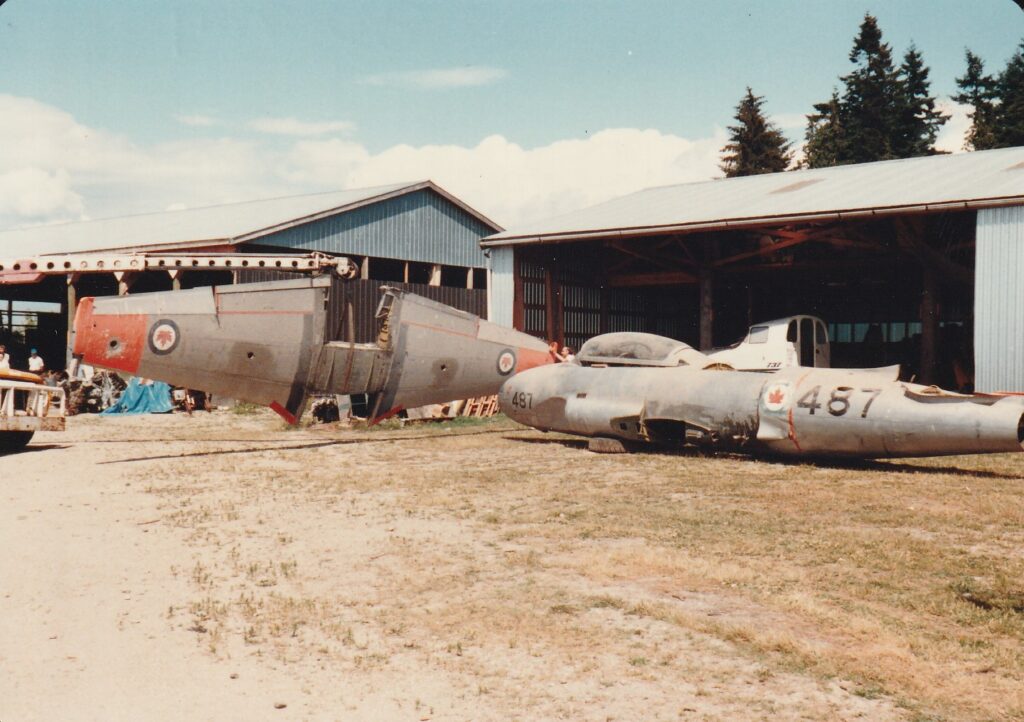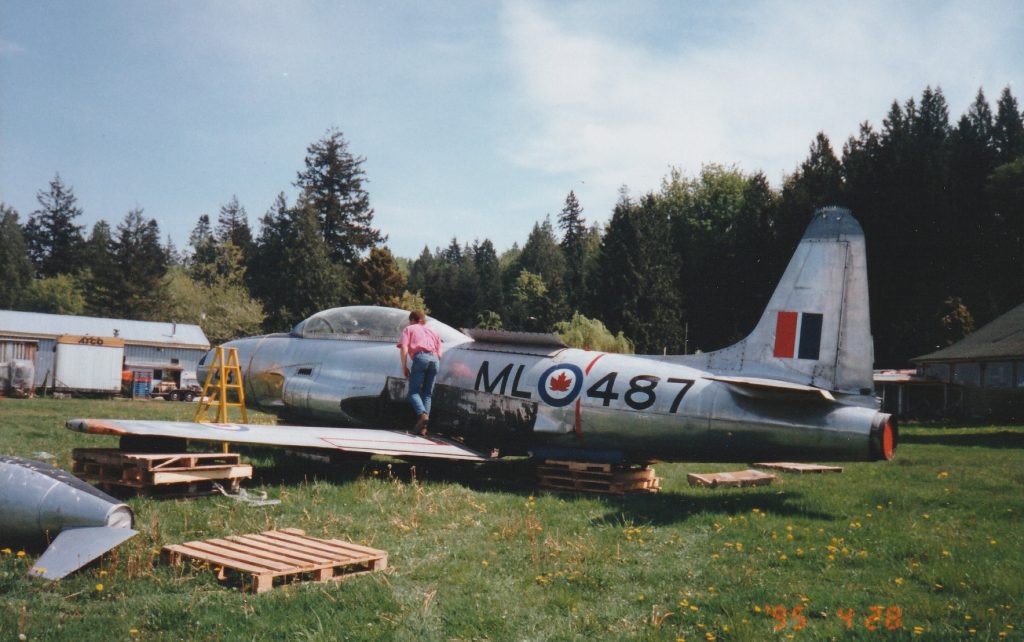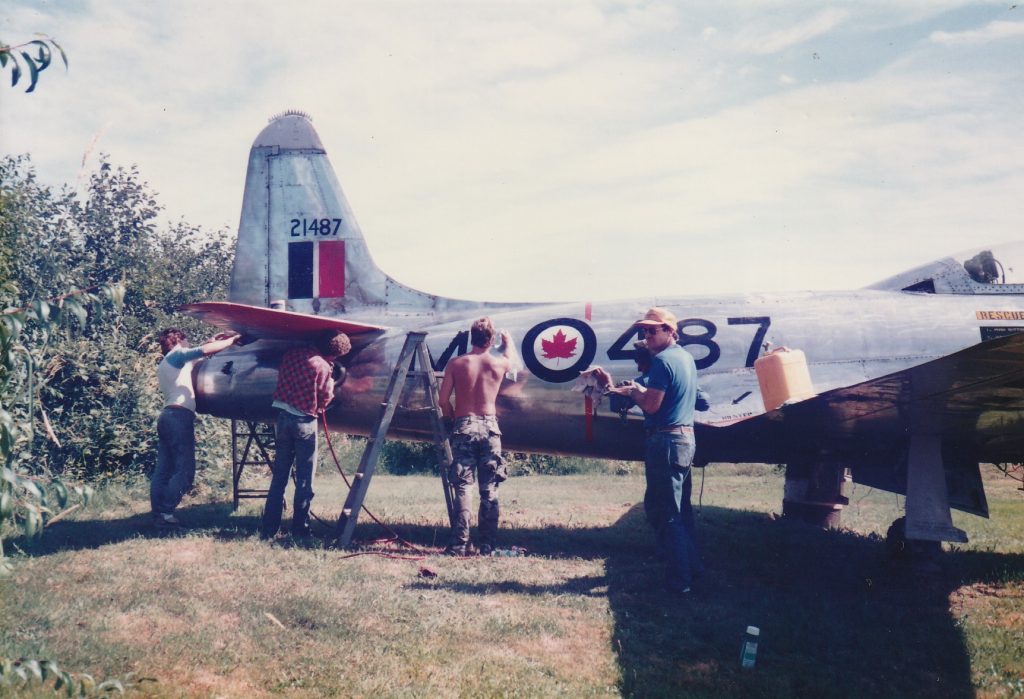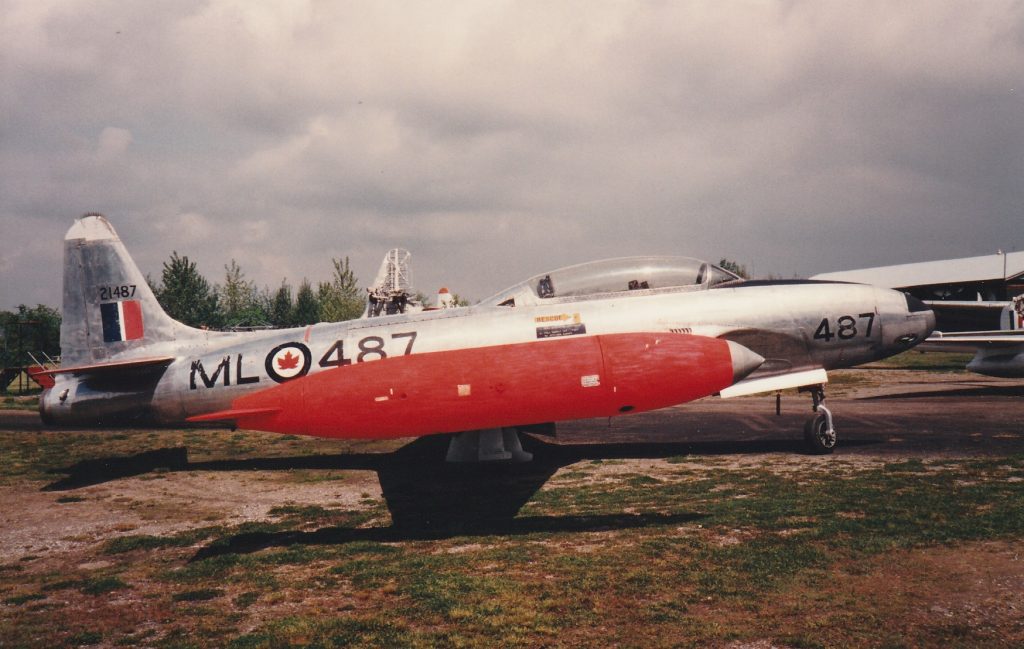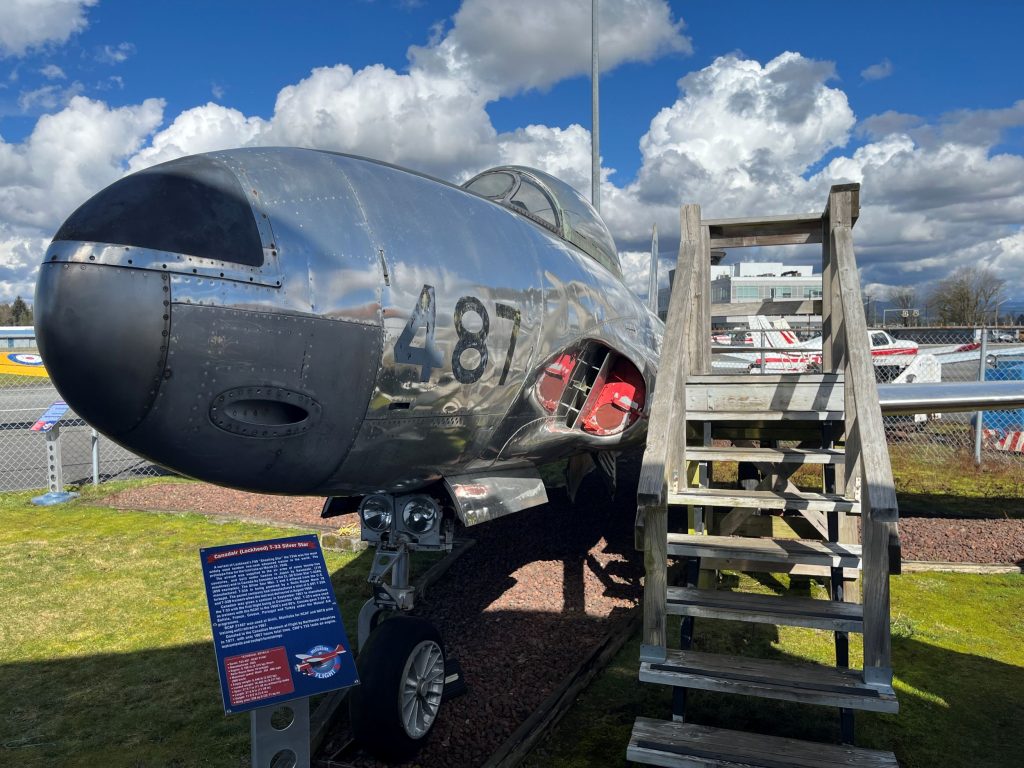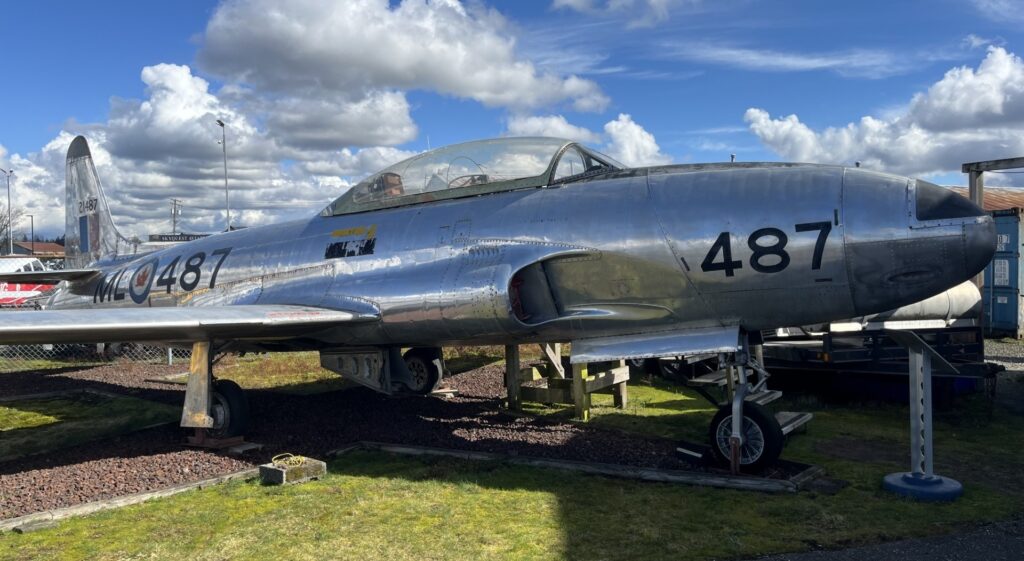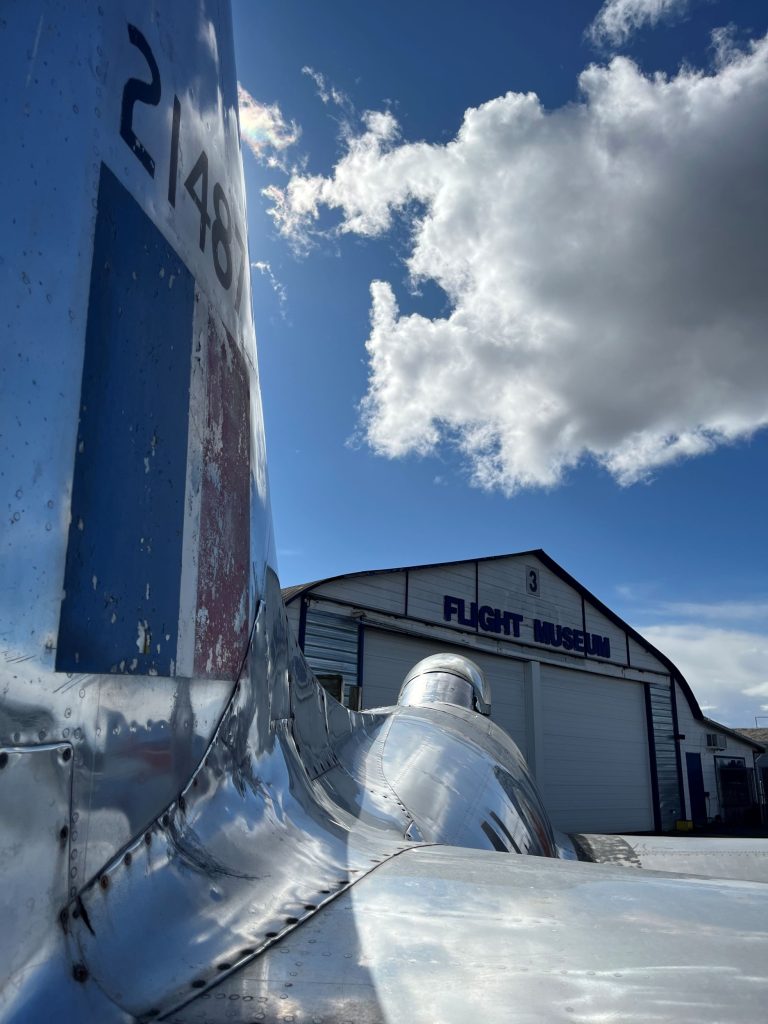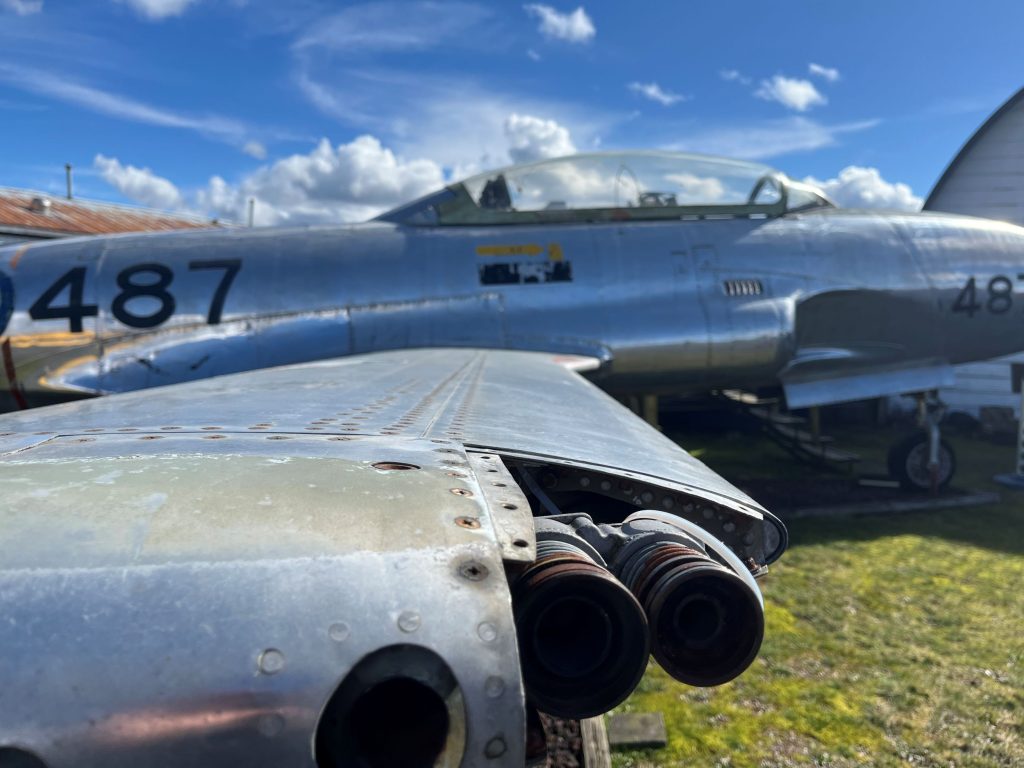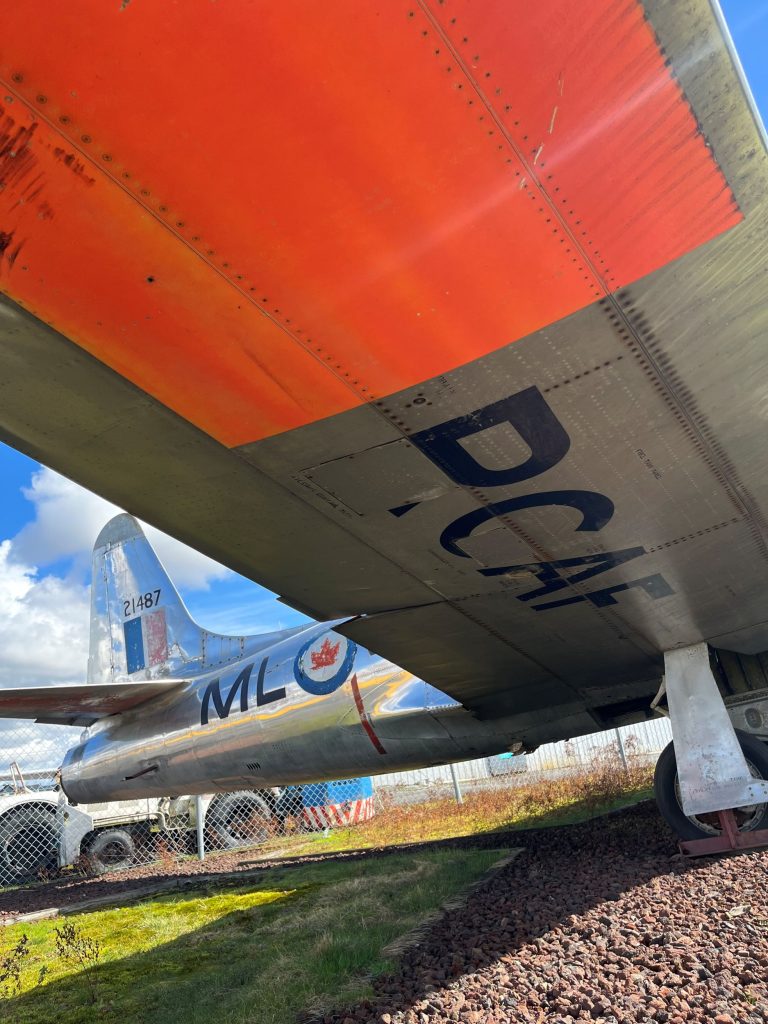
Canadair (Lockheed) T-33 Silver Star
General Description
A variant of Lockheed’s F80 “Shooting Star” the T33A was the most widely used tandem two-seat advanced trainer in the world, and was affectionately know as the “T-bird.” The prototype T-33 flew for the first time on March 22, 1948.
The aircraft went on to be supplied to the militaries of some twenty-five countries, and were built under licence in Japan by Kawasaki, (210 machines) and in Canada by Canadair as the CL-30 Silver Star T-33AN, producing 656 examples. The Canadian-built Silver Star Mk. 2’s and 3’s differed from the U.S. manufactured T-33A in being powered by a Rolls-Royce Nene 10 turbojet. By August 1959, when production ended, the parent company, Lockheed had manufactured a total of 5,691 T-33A and T-33B trainers.Canadair was awarded the contract to manufacture the T-33 in September 1951 and the first Canadian-built T-33 took to the skies in December 1952. While Canada used the T-33 quite heavily, under the Mutual Aid Programme Canada gave T-33s to Bolivia, France, Greece, Portugal and Turkey for their nations’ defense systems.
Astonishingly, the T-33 served with the RCAF from 1953 all the way to 2005. That is 52 years of service which saw it operated as an advanced jet trainer, as target towing aircraft, and as airshow aerobatic performers with the solo performance aircraft known as “The Red Knight” and the formation aerobatic team called the “Golden Centennaires.” In its final years or service, the T-33 was repurposed for electronic warfare training. Outfitted with advanced electronics in its nose, the aircraft could simulate radar jamming and mimic the radar signatures of various threats, from cruise missiles to multiple enemy aircraft. It could also carry chaff dispensers that released metallic strips to confuse radar systems. This made the T-33 an effective tool for simulating attacks, allowing Canada’s active defense squadrons to train in air defense tactics and readiness exercises.
Our Canadian (Lockheed) T-33 Silver Star
Our T-33, a Canadair T-33AN Silver Star Mk.3 built in 1955, became a member of the Royal Canadian Air Force’s fleet of jet trainers in that same year, and was assigned serial RCAF 21487. This aircraft served at Canadian Forces Base (CFB) Gimli in Manitoba, where it was utilized for both RCAF and NATO pilot training programs. It bore the code “ML-487,” with “ML” designating its assignment to the 3 Advanced Flying School (3 AFS) at CFB Gimli.By 23 June 1959 it was put into Long Term storage at RCAF Station MacDonald, near Portage la Prairie, Manitoba. It was then moved to Inactive Reserve in Lethbridge, Alberta in 1963 and then put up for sale by Crown Assets Disposal Corp. In 1967 it was purchased by Northwest Industries, Edmonton AB along with over 100 other decommissioned T-33’s and of those examples, they donated RCAF 21487 to the Canadian Museum of Flight in 1977.
Our T-33 accumulated only 1067 hours total time before being retired by the RCAF, and when it was donated to our museum it was missing many parts including its engine, flight instruments, and cockpit furnishings.

Technical Details:
- Serial T33-487, RCAF 21487
- Manufactured: 1955
- Engine: 5,100 lb (2,315 kg) thrust Rolls-Royce Nene 10 turbojet
- Maximum speed: Mach .787, 600 mph (960 km/h)
- Empty weight: 8,440 lb (3,832 kg)
- Loaded weight: 18,400 lb (8,217 kg)
- Span: 37 ft 7 in (11.48 m) without tip tanks
- Length: 37 ft 9 in (11.49 m)
- Height: 11 ft 8 in (3.6 m)
- Wing area: 238 sq ft (22.11 sq m)
Fun Facts:
Out T-33 is very unique, in that the guns ports are still uncovered. Very few T-33’s are like this, most have the ports covered completely with a plate, so you don’t know what’s under there. Now you know!
The Canadian Museum of Flight is dedicated to preserving Canada’s aviation heritage, from rare artifacts to the very aircraft that shaped our history. Your support allows us to restore, maintain, and share these treasures with the public, inspiring future generations to reach for the skies. Every gift makes a lasting impact — join us in keeping aviation history alive: Donate Now!
